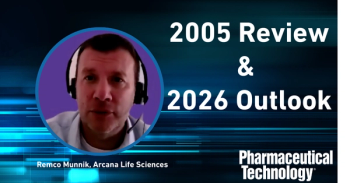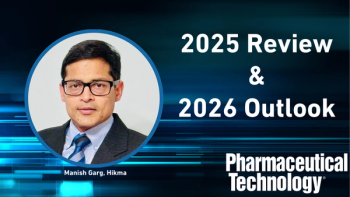
- Pharmaceutical Technology-12-02-2008
- Volume 32
- Issue 12
A Peak in Mass-Spectrometry Literature
A book about pharmaceutical analysis engages the reader with history and unexpected asides.
To ensure drug purity and shield patients from harmful substances such as contaminated heparin, manufacturers and regulators rely on applied analytical science. Chemical metrology is the quantitative measurement of trace amounts of known, specific chemical compounds in complex matrices such as drugs, metabolites, and contaminants. The science's long history includes the invention of mass spectrometry in 1897, the separation of ions with different mass-to-charge ratios, and the development of the high resolution mass spectrometer.
Trace Quantitative Analysis by Mass Spectrometry is an excellent contribution to chemical metrology because the authors draw on historical data, pictures, and stories to provide background for each chapter. This supplemental information makes for absorbing reading.
Chapters 2 through 8 are appropriately labeled "Tools of the Trade," referring to practical aspects of mass spectrometry in a logical fashion. Chapter 2, "The Classical Tool," offers an excellent review of analytical and internal standards, balance, measurements, solutions, and calibration.
Trace Quantitative Analysis by Mass Spectrometry, Robert K. Boyd, Cecilia Basic, and Robert A. Bethem, Eds., Wiley, Hoboken, NJ, 2008, 748 pp., ISBN: 978-0470057711
Chapter 3 discusses the theories, basics, and advanced approaches of chromatography, presented in a way that is easy for novices to understand. The author brings the subject to life with pictures and the story of A.J.P. Martin and R.L.M. Synge, who won the Nobel Prize in chemistry in 1952 for inventing partition chromatography.
The next chapter turns from theory to practice and describes immediate concerns about separation, details about sample-extraction methods, and chromatographic hardware. Perhaps to prepare readers for the frustrations of sample purification and extraction, the chapter is introduced by a quote about the nonreciprocal laws of expectations: "Negative expectations yield negative results, positive expectations yield negative results."
A high level of confidence in identification and the peak purity of the analyte of interest are critical for quantitative analysis. Addressing these concerns, Chapter 4 talks about interfaces and ion sources for chromatography –mass spectrometry, including derivatization. The section offers an uncomplicated explanation of electron ionization, chemical ionization, matrix-assisted laser desorption and ionization, electospray ionization, and related techniques. These options support peak-purification identification with different analytes
Chapter 6 examines mass analyzers and separation techniques such as tandem mass spectrometry and quadrupole instruments, which are critical for evaluation of trace metabolites. Chapter 7 is devoted to ion detection and data processing. The majority of current mass spectrometers detect and count ions using the electron-multiplier concept. This section explains the concept, which is the underlying principle for data integration.
The chapters that follow the "Tools of the Trade" sections are devoted to practical aspects of method development. Chapter 9 explains fitting a method to a purpose and refers to the legal aspects of providing evidence for results when needed. Passages address issues such as balancing analytical thoroughness, available time and resources, analytical objectives, and requirements.
The chapter about method validation and sample analysis in a controlled laboratory environment provides an algorithm that includes decision points that span from initial contact with a client to conducting the analysis. The section explains the details required for validation, followed by bioanalysis and documentation.
Overall, Trace Quantitative Analysis by Mass Spectrometry is a wonderful book for beginner and intermediate students, analysts, and scientists keen on learning more about mass spectrometry. The authors' discussions of history and the evolution of relevant science make the text lively and engaging, no small achievement for a book about analytical science.
Sanjay Garg is associate professor and deputy head of the School of Pharmacy at the University of Auckland, Building 504, 85 Park Road, Grafton, Auckland, NZ, tel. +64 9 373 7599 ext. 82836, fax +64 9 367 7192,
Articles in this issue
about 17 years ago
The Blame Gameabout 17 years ago
Formulation of Sustained-Release Ketorolac Tromethamine Pelletsabout 17 years ago
Billion-Dollar Deals of 2008about 17 years ago
The Good, the Bad, and the Best Jobsabout 17 years ago
Report From: Indiaabout 17 years ago
Industry Changes and Challengesabout 17 years ago
In the Spotlight December 2008about 17 years ago
Economy Hits R&D Hardestabout 17 years ago
A Tale of Two Pharmaceutical Industriesabout 17 years ago
Gauging Innovation in Pharmaceutical Development and ManufacturingNewsletter
Get the essential updates shaping the future of pharma manufacturing and compliance—subscribe today to Pharmaceutical Technology and never miss a breakthrough.




